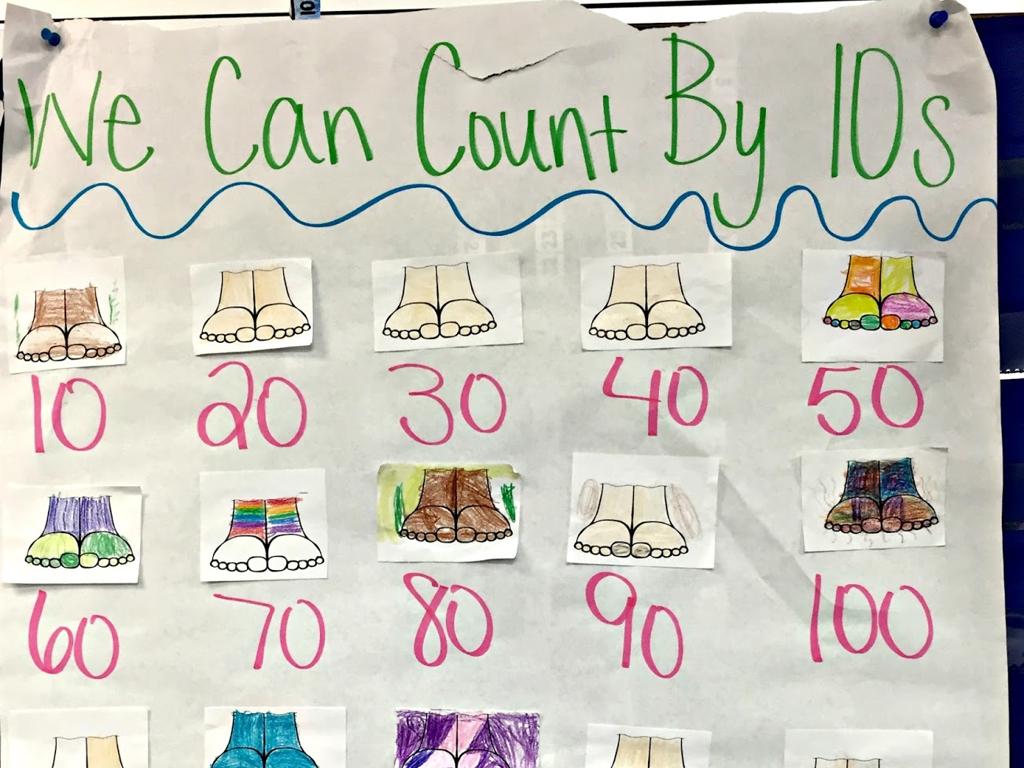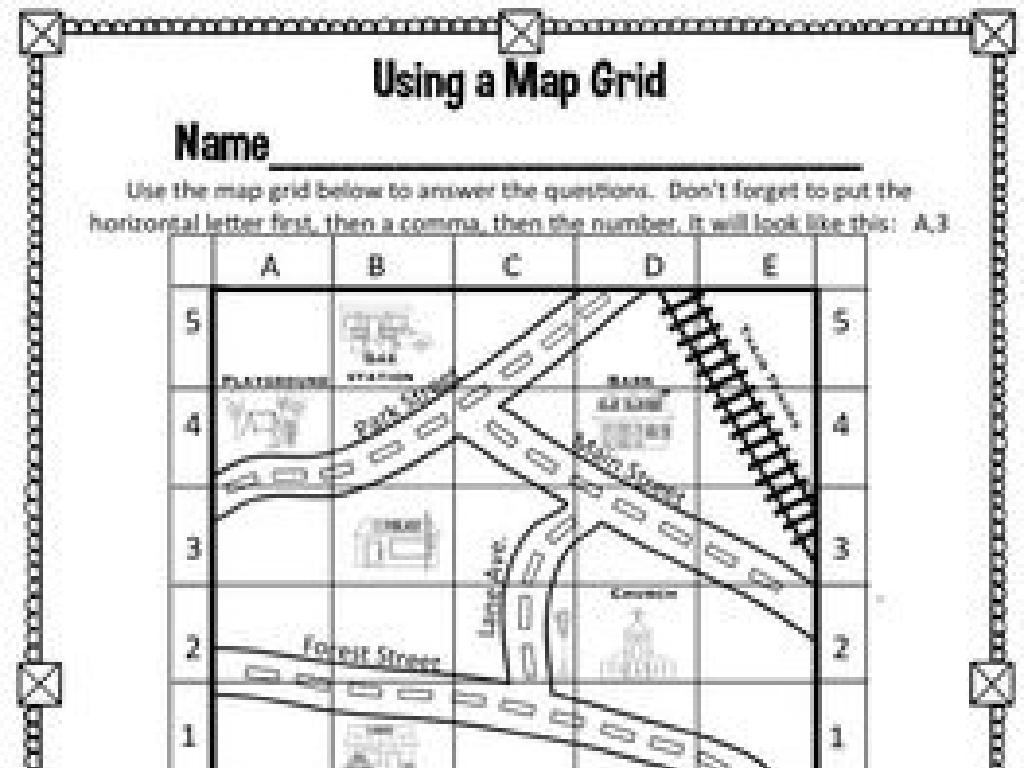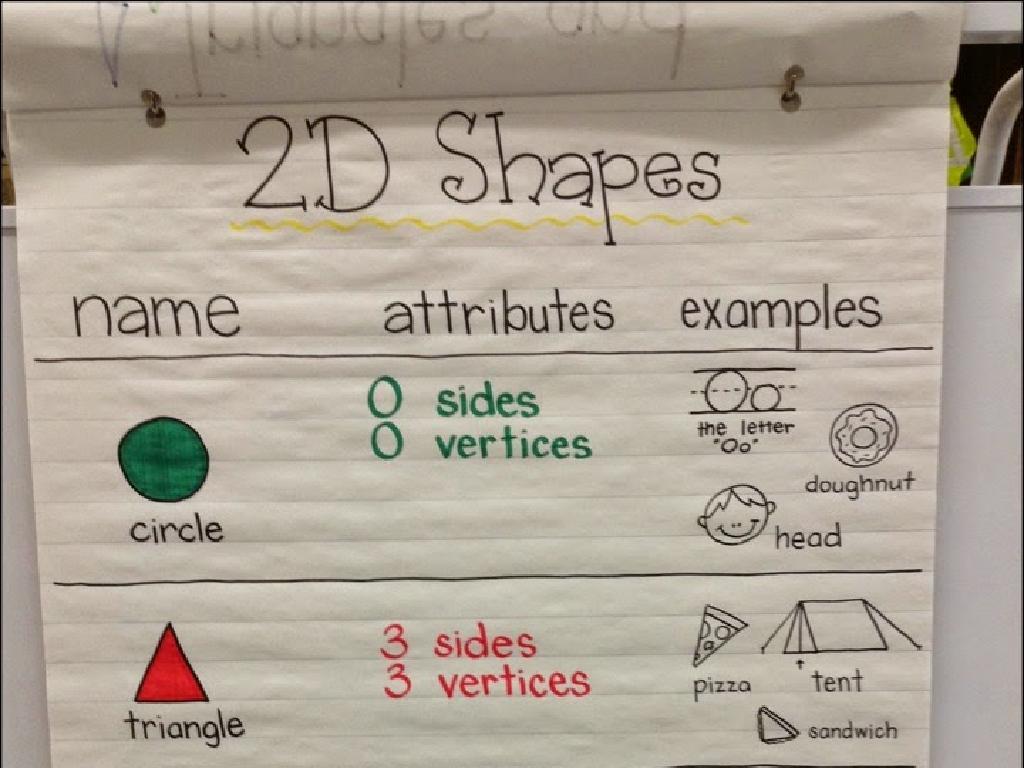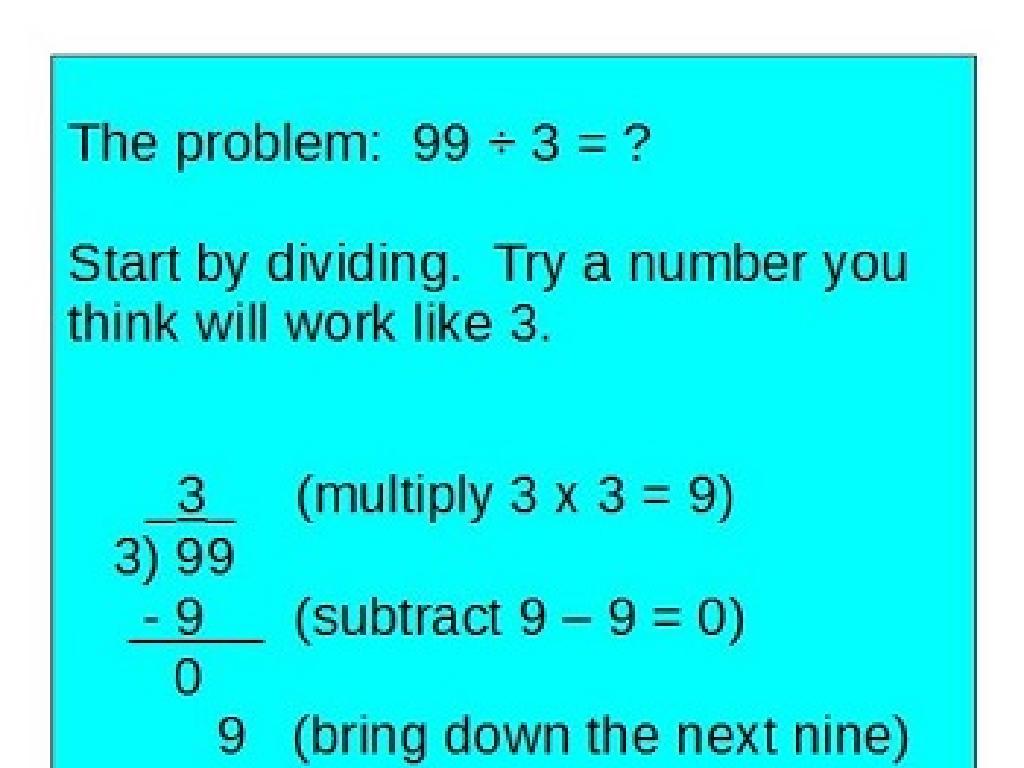Make Predictions
Subject: Math
Grade: Sixth grade
Topic: Probability
Please LOG IN to download the presentation. Access is available to registered users only.
View More Content
Introduction to Probability
– What is Probability?
– Probability measures the chance of an event occurring.
– Probability in daily life
– Weather forecasts, sports, and even board games use probability.
– Making predictions with Probability
– Predictions are educated guesses about future events based on probability.
– The role of Probability in decisions
|
Begin the lesson by explaining probability as a mathematical concept that measures the likelihood of an event happening. Use familiar examples such as predicting the weather or the outcome of a sports game to illustrate how probability is used in everyday life. Emphasize that making predictions is about using probability to make informed guesses about what might happen in the future. Discuss how understanding probability can help us make better decisions in uncertain situations. Encourage students to think of other areas where probability plays a role and to be ready to explore how to calculate and use it in various scenarios.
Probability Basics: Making Predictions
– What is Probability?
– Probability measures the likelihood of an event occurring.
– Understanding the Probability Scale
– Scale ranges from impossible (0) to certain (1).
– Exploring Simple Probability
– Simple probability is the ratio of favorable outcomes to total possible outcomes.
– Making Predictions with Probability
|
Introduce the concept of probability as a way to measure how likely an event is to happen. Explain the probability scale, which helps categorize predictions as impossible, unlikely, even chance, likely, or certain. Discuss simple probability by using examples like flipping a coin or rolling a die to illustrate the chance of an event happening. Emphasize that probability is expressed as a number between 0 and 1, where 0 means the event cannot happen and 1 means it will definitely happen. Encourage students to think of everyday events and make predictions about their outcomes using probability terms.
Making Predictions with Probability
– Using probability to predict
– Probability uses math to estimate the likelihood of future events.
– Weather forecasting example
– Meteorologists use probability to predict weather patterns.
– Predictions vs. Guessing
– Predictions are informed by data, while guesses are not.
– Importance of accurate predictions
|
This slide introduces students to the concept of making predictions using probability. Begin by explaining that probability provides a way to quantify the likelihood of possible outcomes, which can be used to make informed predictions. Use weather forecasting as a relatable example, as meteorologists analyze data to predict weather, which is a practical application of probability. Highlight the difference between making an educated prediction based on data (probability) and making a guess without supporting information. Emphasize the value of making accurate predictions in various fields such as science, economics, and daily life decisions. Encourage students to think of other areas where predictions are made and discuss the role of probability in those predictions.
Calculating Simple Probability
– Understand probability formula
– P(Event) = Favorable outcomes / Total outcomes
– Example: Rolling a 4 on a dice
– What’s the chance of getting a 4? There’s 1 favorable outcome, 6 possible outcomes.
– Practice with a deck of cards
– How likely is a red card? There are 26 red cards in a 52-card deck.
– Share your answers
|
This slide introduces the basic formula for calculating probability, which is a fundamental concept in understanding chance and making predictions. Start by explaining the formula, where ‘P’ stands for probability, ‘Event’ is what we’re trying to find the probability of, and ‘favorable outcomes’ are the outcomes we’re interested in over the ‘total outcomes’ possible. Use the example of rolling a dice to solidify their understanding, as it’s a simple scenario with a small number of outcomes. Then, move on to the practice problem involving a deck of cards, which is slightly more complex but still manageable. Encourage students to calculate the probability on their own before sharing and discussing the answers as a class. This will help them apply the concept of probability to different situations and improve their prediction skills.
Complex Predictions in Probability
– Predict outcomes of multiple events
– Example: Spinning red after blue
– If a spinner has equal sections of red and blue, what’s the chance of spinning a blue then a red?
– Differentiate independent & dependent events
– Independent events don’t affect each other, while dependent events do.
– Calculate probabilities of complex events
– Use multiplication for independent events and adjusted probabilities for dependent events.
|
This slide introduces students to the concept of making predictions in probability when dealing with multiple events. Start by explaining that the likelihood of consecutive outcomes can be calculated. Use the spinner example to illustrate a scenario where one event follows another. Clarify the difference between independent events (the outcome of one does not affect the other) and dependent events (the outcome of one event affects the probability of the next). Teach students how to calculate the probability of two independent events occurring in sequence by multiplying their individual probabilities. For dependent events, discuss how the probability of the second event may change based on the outcome of the first. Provide practice problems to help students apply these concepts.
Probability in Action: Spinner Predictions
– Create your own spinner
– Designate possible outcomes
– Divide spinner into sections with different colors or numbers
– Predict outcomes of 10 spins
– Use probability to guess which section will come up most often
– Record and discuss results
– Compare predictions with actual results after spinning
|
This group activity is designed to help students understand and apply the concepts of probability. Each group will create a spinner divided into sections that can have different colors, numbers, or symbols representing various outcomes. Students will use their understanding of probability to predict which outcomes they expect to occur when the spinner is spun 10 times. After conducting the spins, they will record the actual results and discuss any differences between their predictions and the actual outcomes. This will help them grasp the idea of theoretical versus experimental probability. For the teacher: Prepare materials for spinners, facilitate group discussions, and ensure each group understands how to make fair predictions based on the probability of their spinner’s design.
Review: Probability and Predictions
– Recap of probability basics
– Probability measures the likelihood of an event occurring.
– Discuss group activity outcomes
– Review the predictions made and compare with actual results.
– Engage in Q&A session
– Opportunity to clarify doubts and expand understanding.
– Share thoughts and questions
|
This slide aims to consolidate the students’ understanding of probability and its application in making predictions. Begin by reviewing the fundamental concepts of probability, such as the definition of probability, and the difference between theoretical and experimental probability. Move on to discussing the results of the group activity, focusing on how predictions were made and what the actual outcomes were. Encourage students to participate in a Q&A session where they can ask questions or share insights. This interactive discussion will help address any misconceptions and allow students to learn from each other’s perspectives. The teacher should facilitate the discussion, ensuring that each student feels comfortable to speak up and that the conversation remains focused on the topic of probability and predictions.
Probability Homework: Making Predictions
– Practice calculating event probability
– Observe and predict a daily event
– Choose an event like rain or getting a heads-up coin
– Record the outcome of your prediction
– Was your prediction correct or not? Note it down.
– Study for the upcoming quiz on Probability
|
This homework assignment is designed to reinforce the concepts of probability and prediction in practical scenarios. Students should practice calculating the probability of simple events to solidify their understanding of theoretical probability. Additionally, they are tasked with making a prediction about a daily event, such as whether it will rain or the result of a coin toss, and then recording the actual outcome to compare with their prediction. This exercise will help them understand the real-world application of probability and prepare them for the quiz. Encourage students to review their notes and any in-class materials to ensure they are well-prepared for the quiz.





